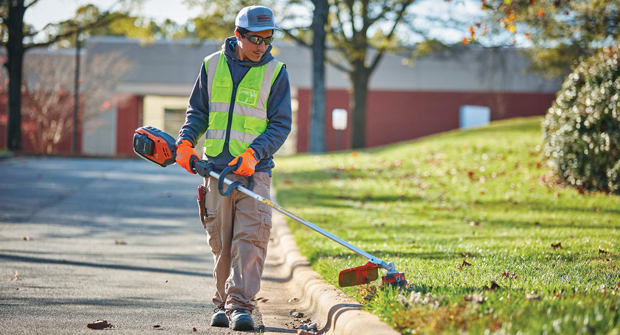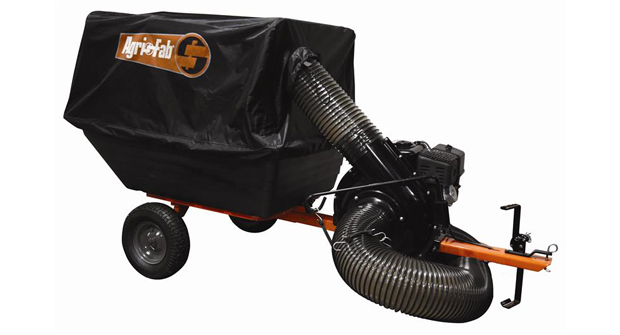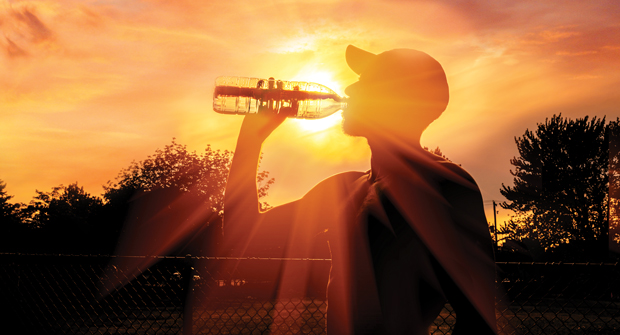For Michael Bedell, owner of Bedell Property Management in Milford, Mich., keeping employees safe while using hand-held equipment is a must.
Bedell and Dante DeLorey of Triple-D’s Lawn Care in Allenhurst, Ga., share tips on how you and your crews can stay safe while running string trimmers.
Start with PPE
The basics of string trimmer PPE should be familiar to a landscaper as they include eye protection, hearing protection and hand protection. Bedell says he always carries an extra pair of safety glasses when he’s on a jobsite after hearing about a close call an employee had.
“He grabbed the trimmer and headed off, and 30 seconds later, he had one of the guys chewing him out, saying you have to put glasses on, something bad could happen,” Bedell recalls. “So he stops what he’s doing and goes back to the truck and puts the safety glasses on, and 30 seconds later, a rock comes up, hits the glasses and actually shatters the plastic and most likely would’ve taken his eye out.”
On top of eye and hand protection, protecting a user’s legs is a major point of concern while using a string trimmer. Solutions for this problem range from wearing long pants to specialized guards from ComfortTrim that DeLorey uses.
“(The debris) just beats your legs up, and out here we have sand that just feels like razor blade taking your skin all day,” DeLorey says. “I always wear (leg protection), it’s just so annoying having the debris hit my leg, and it can be potentially dangerous.”
Bedell adds that he’s had string trimmer users utilize heavy-duty chainsaw chaps when they need a little extra protection.
Maintenance checks
In addition to PPE, regular maintenance is a necessary step to make sure operators are safe when using string trimmers. Bedell recommends a quick check of problem areas when it’s time to change the line in a trimmer.
“For me, anytime that that line has to be replaced, that’s the time to just kind of do a quick minute or two check of the unit to see if anything is loose or broken,” he says.
The bump head is a good place to double-check, according to Bedell, as it gets a lot of abuse. A loose bump head, if not caught in time, could come apart and become a projectile, he says.
“It really only takes a minute or two, and if there’s something wrong, it’s typically pretty glaring and obvious,” he adds.
Bedell also says that his company does a mid-season, in-depth maintenance reset. This, he says, allows his employees to operate their machines with the confidence that they will work well in the second half of their operating season.
“It’s pulled out and washed, and we go through everything,” he says. “We swap out air filters and fuel filters. This way, we’re already there doing it versus if I don’t, eventually it will get my attention, but it’ll be at a really inopportune time that costs us money out in the field.”
Above and beyond
Above being aware of how you can be safe while using a string trimmer, Bedell says that he stresses the importance of keeping others safe to his employees.
He points toward potential hazards such as windows that flying debris could damage or other employees in the field who could be within striking distance if something went wrong.
“It’s easy to keep yourself safe, and that’s what you should start with,” he says. “It’s much harder to control all the other outside variables and any piece of equipment like a string trimmer that can discharge an object and move it away from the area that you’re working on. It’s something that you really have to be attentive to.”


